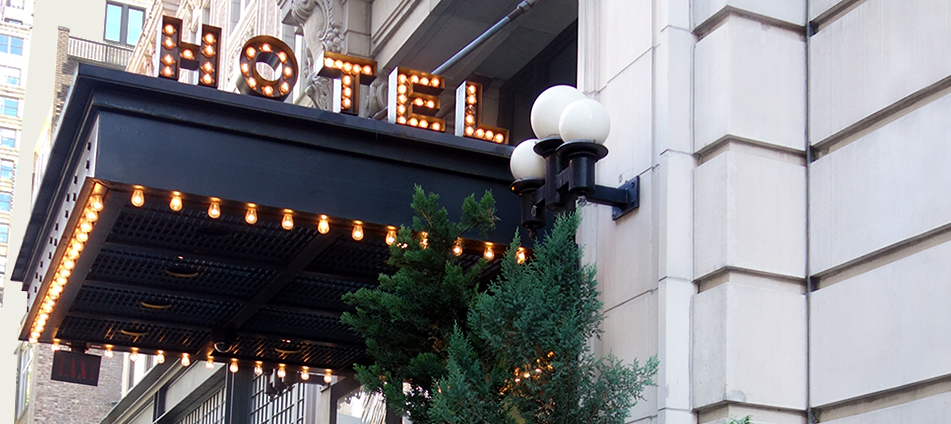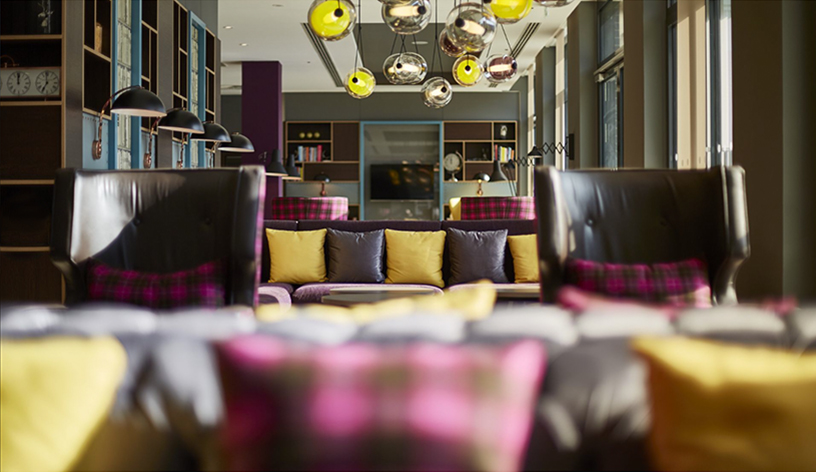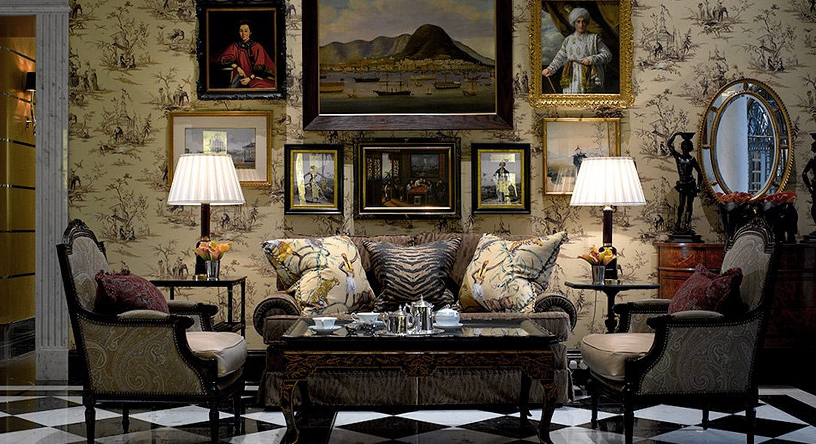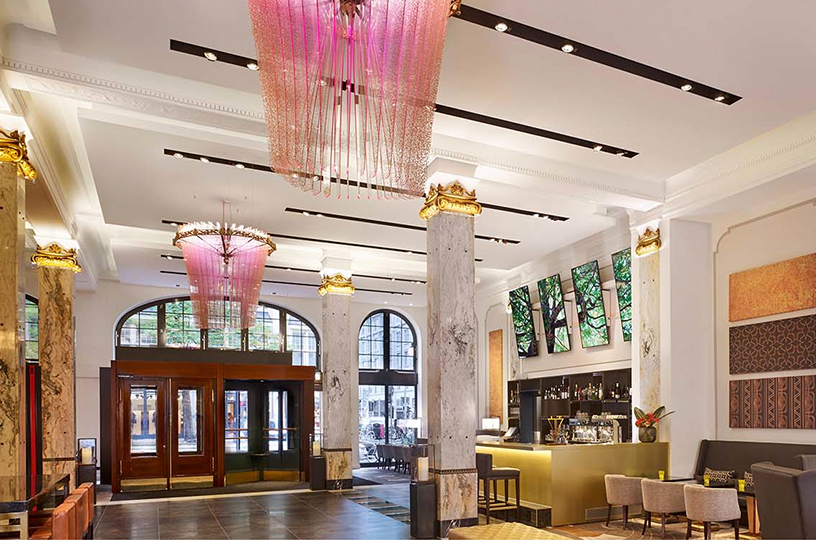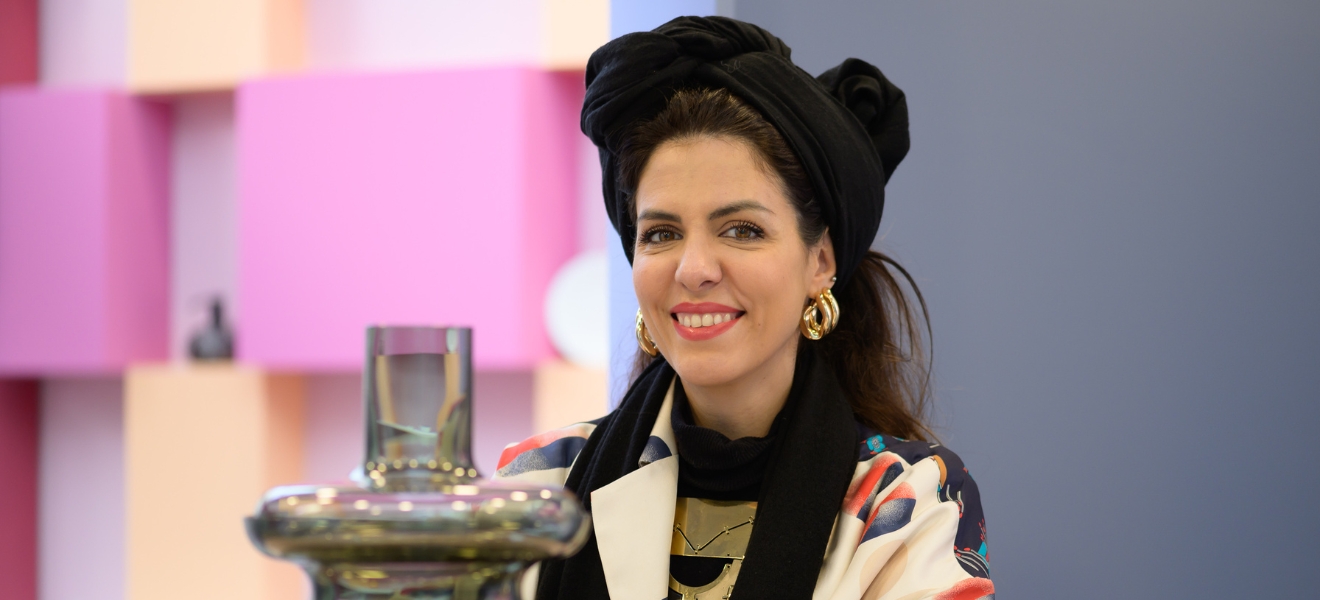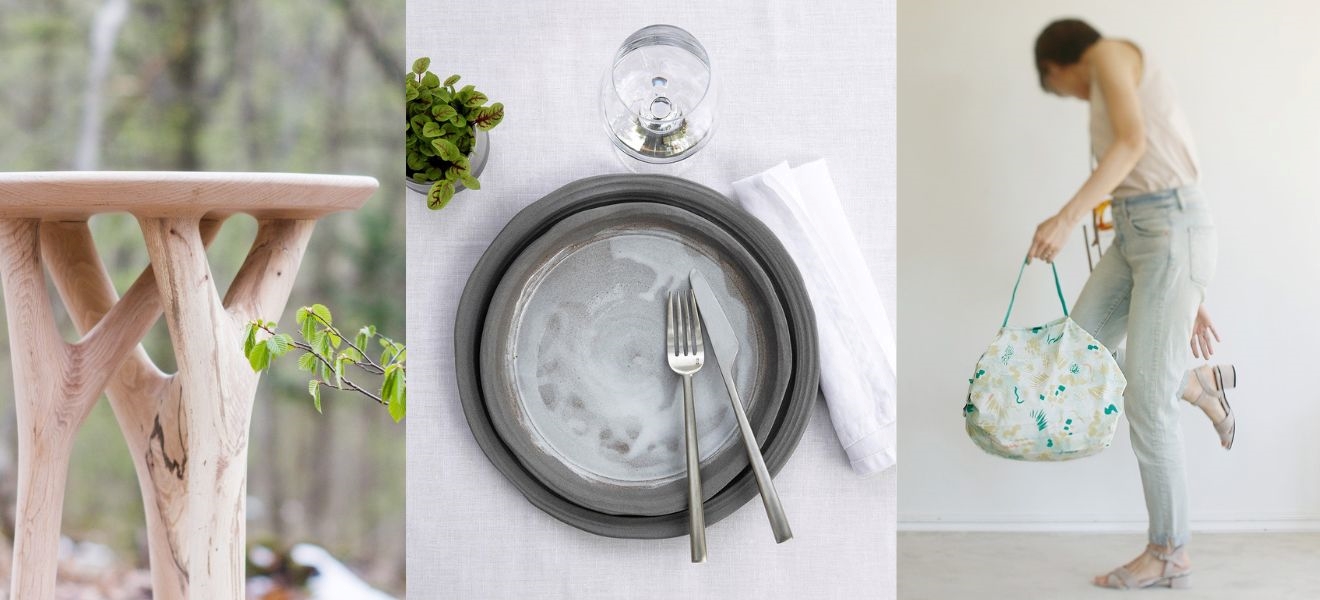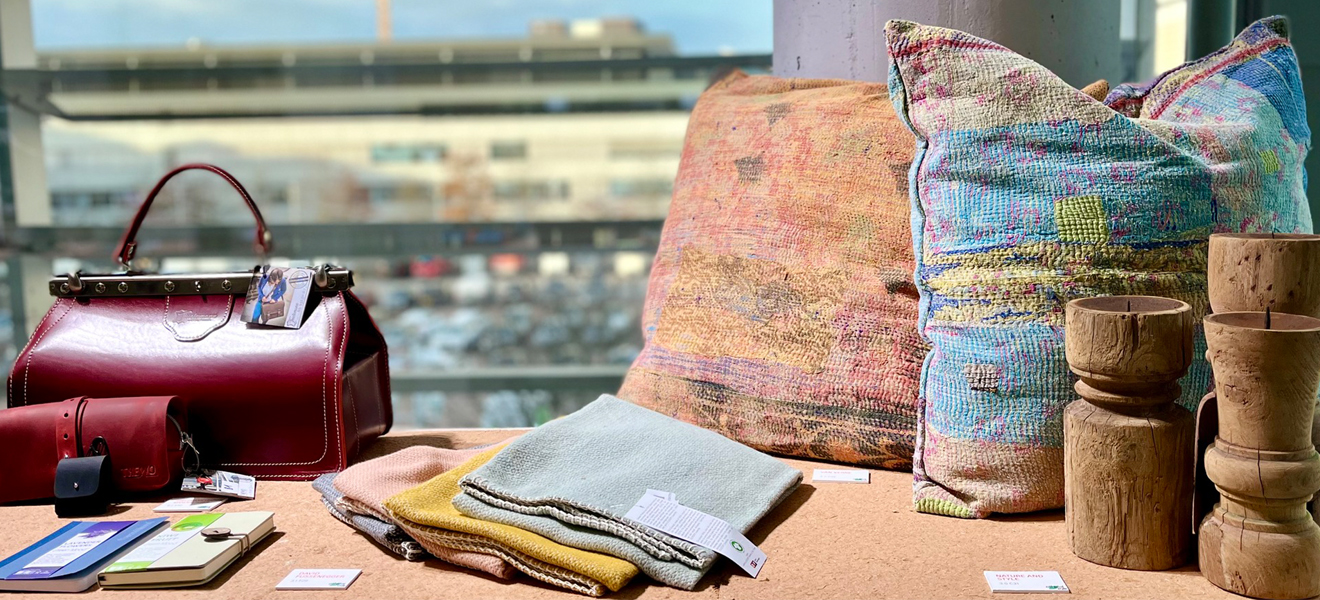Designer Corinna Kretschmar-Joehnk throws the desk out of the window when furnishing a next-generation hotel room. The joint head of JOI Design in Hamburg works with a studio team on her interiors. She has spent over 30 years creating many distinctive premium brand hotels, luxury spas and restaurants. This trend expert has some surprisingly radical statements for us, and a fair few ‘instagrammable’ style secrets.
Hello Corinna! I hear hotels are no longer just about sleeping. What will they need to keep their customers satisfied in future?
“Lots of things are in flux right now. Young, unique and independent hotels are setting trends. But one thing’s for sure: hotels are looking less and less like an anonymous place to lay your head, and more and more like private spaces – they feel like being a guest at a good friend’s house. They can be kooky and a little ‘off the wall’. ACE Hotel New York in the heart of Manhattan and The Hoxton, Holborn in London have both worked wonders with this principle. In Frankfurt, the Libertine Lindenberg embodies the same idea, as does the Premier Inn we designed in the Europaviertel. Feeling cosy is increasingly important: it’s what we all long for. The large hotel chains have been slow to adopt this ‘homesick blues’ trend, as I call it.”

Can you think of any examples?
“The ‘virtual log fire’ on your TV screen, which budget hotels began with a knowing wink, has now spread to upmarket hotel rooms and lobbies. Many places, including the Savoy in London, have done away with reception desks. Instead, they’ve turned check-in into a casual chat: staff bring an iPad to the guests as they relax in the lounge. Also, a few years ago, several hotel chains told us having a spa didn’t fit their image. There are now very few that don’t have one, even if it’s just a small area. People are thinking more about their health as life is getting more stressful and work often encroaches on evenings and weekends. Hotel design needs to consider what our society needs – what do we want when we’re traveling?”
Can we find inspiration on the street?
“Yes, often we can. I travel a lot; photos are fine, but being there in real life, seeing and feeling a place is even more important. That’s my greatest source of inspiration. I sometimes find ideas in the supermarket – like the way they present a product. Of course, trade fairs are important for us too, we can find all the materials we need at Ambiente. There’s everything we need to give our projects a personal touch, especially the more artistic stuff.”
Have hotel guests’ expectations risen?
“Yes, certainly! The digital realms we move in make people long for a moment’s respite. We find that hotel guests no longer see any clear boundaries between the different spheres and moments in life. Guests want to be entertained in a multifunctional atmosphere, not to stay in uniform hotel rooms that are the same the world over. Ideally, they’ll photograph everything they like and post it for the rest of the world to ‘Like’. We achieve it by creating ‘instagrammable moments’ in interior architecture. That’s much better advertising than a glossy brochure.”
What does your work look like in practice?
“We get together with the customer to develop the ‘storyline’ and consider what the hotel stands for and how we can embody that. It’s the same whether the hotel is a chic one-off or a luxury chain – it’s all about a tailored brand experience. Take the Reichshof – Curio Collection by Hilton for example, opposite Hamburg’s main station. This grand, 100-year-old hotel was completely gutted and the rooms divided up differently. It’s now the relaxed, avant-garde place to be for both hotel guests and Hamburg residents.”
The Reichshof is a celebration of art déco. And what better place to celebrate than behind this heritage-protected façade?
“Our guests can sense the authenticity. Designs that tell a good story and that work are also credible. The hotel has this marvellous past, that’s its great strength. The storytelling aspect of hospitality design will become more distinctive in future. The cool, clean places will fall on hard times.”
If I feel at home somewhere, I’ll stay longer
“One clear trend to emerge has been new hotels focusing on long-stay guests. Some rooms at the Libertine Lindenberg have kitchens, and there’s a communal kitchen on the top floor. You can use it to cook for yourself or with others, a bit like in a shared house. In fact, it achieves a feeling of homeliness almost automatically. This is a place where any minor difficulties are forgiven, since guests are treated with such charm.”
Which countries are leading the way in hotel design?
Fundamentally, there’s good stuff going on all over the world, everybody’s upped their game, especially in the US. New York has woken up from hibernation; after 9/11 there was a hiatus in innovation. Now a lot of new hotels have sprung up, on a very high level.”
Next time we’re on holiday in the Big Apple, are there any must-sees?
“The Baccarat is the flagship hotel for glassware brand Baccarat Crystal, located near the Museum of Modern Art. It’s a real midtown jewel, deeply rooted in the luxury tradition, but still with a very contemporary touch. This is a crystal palace, very exciting, you feel like you’re in a modern fairy tale.”
What do you want to stop seeing in hotels?
“No more desks screwed to the walls in the guest rooms. There are better solutions. Perhaps a small, round table you can move easily to wherever you want it. We thought about that for the Hilton Munich Airport. And no more stiff uniforms. If the architecture is informal then the staff can be more relaxed too. And nobody wants to hear the question: ‘Did you have a pleasant journey?’.”

Thank you, it sounds like the next generation of hotels is on course to be really stimulating.
